Thank you First Alert for sponsoring this post.
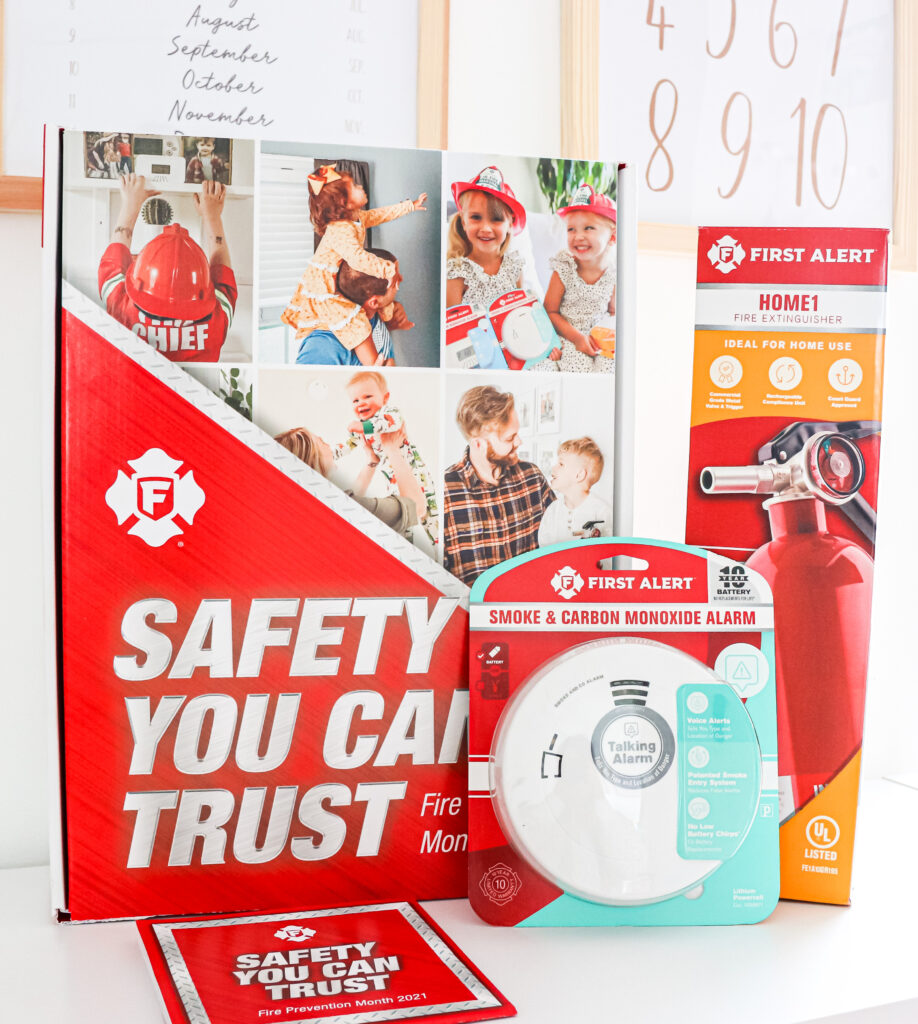
Let’s chat about protecting our family and our home!
Becoming a mother has been the best thing that has ever happened to me! Emerson is now 17 months old and her safety is my #1 priority. I remember the anxiousness that came with becoming a mother and that only amplified once she arrived.
To alleviate some of the worries, my husband and I sat down to discuss what we could do to help make our home safe for not only our daughter, but for us and our two dogs as well. We came up with a game plan that included:
- Install Smoke & carbon monoxide prevention
- Have fire extinguishers
- Create a Fire Safety Plan
- Be Prepared for Inclement Weather
- Baby-proofing our home
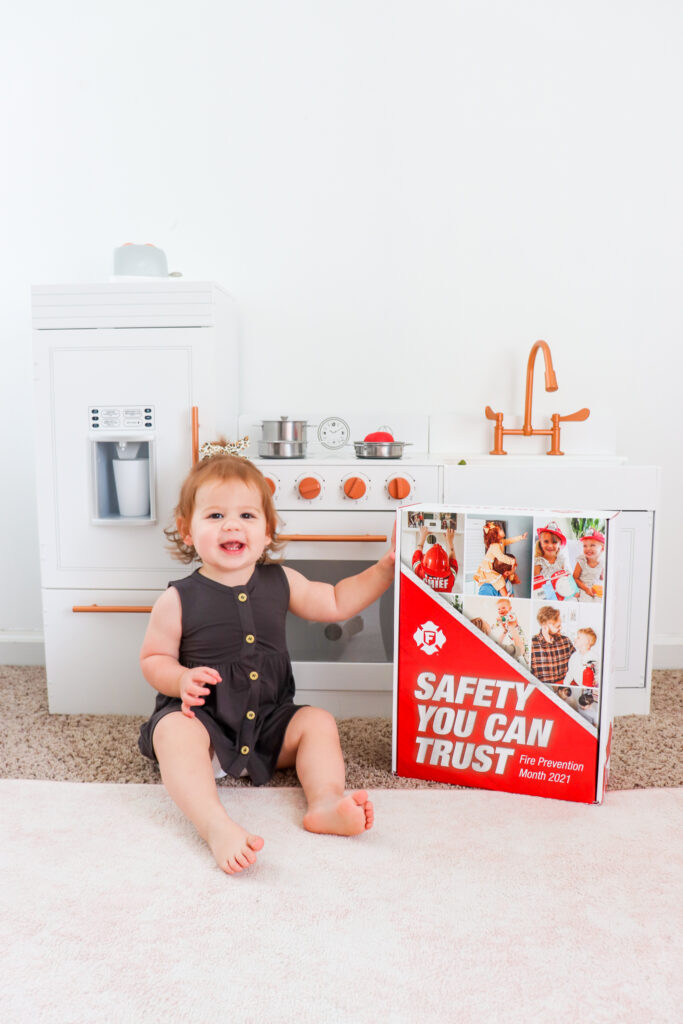
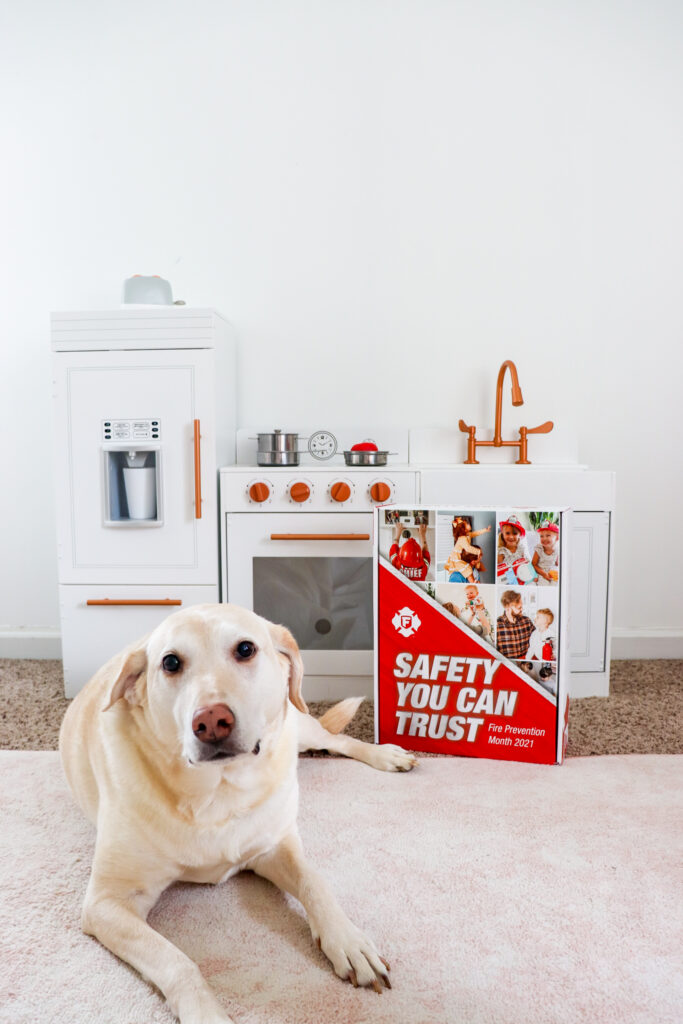
October is Fire Prevention Month and it’s the perfect time to gather your family to discuss fire safety and general safety measures for your family. I am thrilled to be partnering with First Alert to share these home safety tips because prevention and preparedness are not something we think about until it’s too late. Here is your friendly reminder to take a few moments to help protect you, your family, and your home. Being prepared is key!
Here are some tips on how we have made our home a safer environment for our family:
Install Smoke & Carbon Monoxide Prevention
Although our home already had smoke and carbon monoxide (CO) alarms, we wanted to replace them for peace of mind knowing they were s up-to-date. We also wanted to make sure each bedroom and level of our home was equipped with a smoke & CO alarm. Did you know that your alarms should be replaced at least every 10 years? That’s right – they don’t last forever. Moreover, you should replace the batteries every 6 months. Not knowing the age of the existing alarms in our home was unsettling and it can be hard to remember to replace the batteries often. We upgraded to the First Alert’s 10-Year Sealed Battery Combination Smoke & CO Alarm for convenient protection against both fire and CO. They offer 10- year sealed battery alarms to eliminate battery replacements for a decade. It’s a great relief to know we only need to replace this alarm every 10 years and won’t hear any chirping for low batteries for just as long.
It’s also important to test your alarms regularly as a part of your safety plan. Sadly, 3 of every 5 home fire deaths result from fires in homes with no working smoke alarms or no smoke alarms at all, so be sure you don’t miss this step and don’t wait until tragedy strikes.

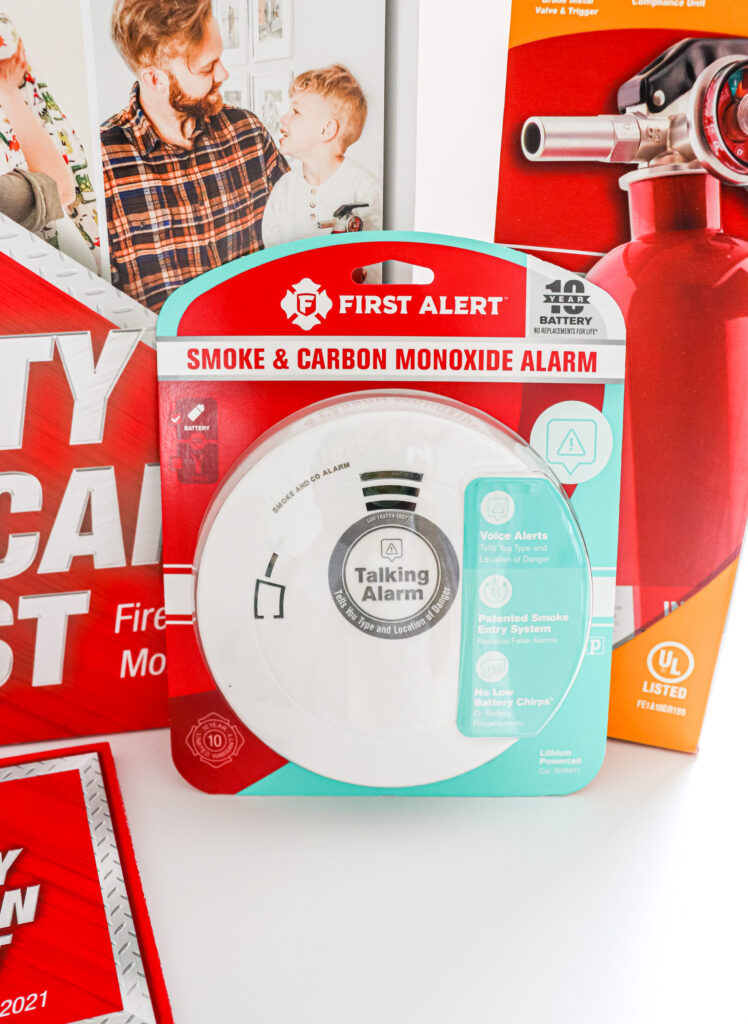
Have Fire Extinguishers
When I was pregnant last year with Emerson, Jared and I came to the realization that we did not have a fire extinguisher in our home. I remember feeling so disappointed in myself that we didn’t have one. Especially with all the cooking we do in our kitchen. Unattended cooking is the #1 cause of home fires and while you always think “It will never happen to me,” distractions and accidents can happen at any time.
In my time of nesting before Emerson’s arrival, a fire extinguisher was at the top of our list to buy before she came home with us. We wanted to make our home as safe as possible for her and our family, and felt good knowing we had one in our kitchen. It wasn’t until recently, that we came to another realization that we should also have a fire extinguisher on every floor of our home. We recently equipped our laundry nook with the First Alert Rechargeable Home Fire Extinguisher so we now have one upstairs as well.
Purchasing fire extinguishers for your home is only half of being prepared. The other part is knowing how to use one when necessary. An easy way to remember how to use a fire extinguisher is with the acronym P.A.S.S.
P- Pull the pin
A- Aim the nozzle at the base of the fire
S- Squeeze the trigger
S- Sweep from side to side
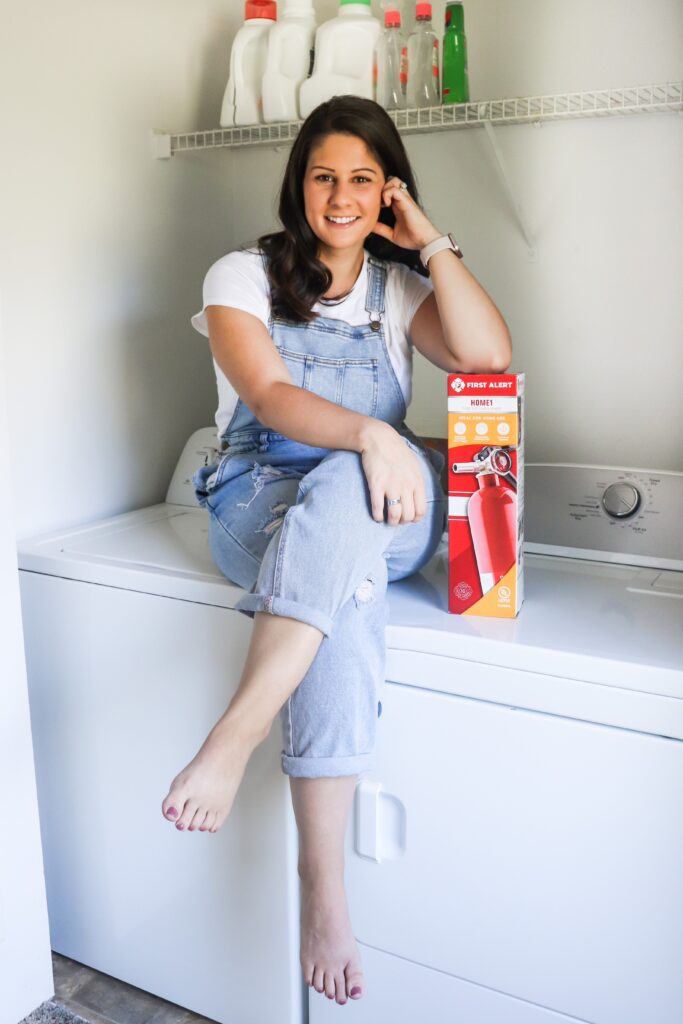
First Alert is the #1 brand in fire safety by providing reliable protection you can trust . You can find First Alert fire safety products at Lowe’s. As part of Fire Prevention Month, Lowe’s wants to #buildthanks for first responders, doctors and nurses with a 10% discount October 22-24. Register for this special offer at Lowes.com/firstresponders.
Create a Fire Safety Plan
Have a discussion and create a safety and emergency escape plan with your spouse and kids that are old enough to understand. It’s important to establish a plan as a family so that everyone knows what to do in the event of an emergency.
Create a Whole Home Safety Checklist by drawing a map of your home and label each room. You can then walk through your home and ensure you have smoke & carbon monoxide (CO) alarms on each level and in every bedroom, plus fire extinguishers. Once installed, place alarm and fire extinguisher stickers on your home map to check it off.
It is also recommended that you plan two ways out of each room/area of your home and an outside meeting spot at a safe distance from your home (mailbox, neighbors home, etc.) Once out of your home, you should then call 911. Be sure to review and update your plan at least twice a year as things can change. Our brain could use the refresher too!
We also have stickers for our windows to help first responders know that we have 2 dogs and 1 child located inside of the home that needs to be rescued in the event of an emergency.
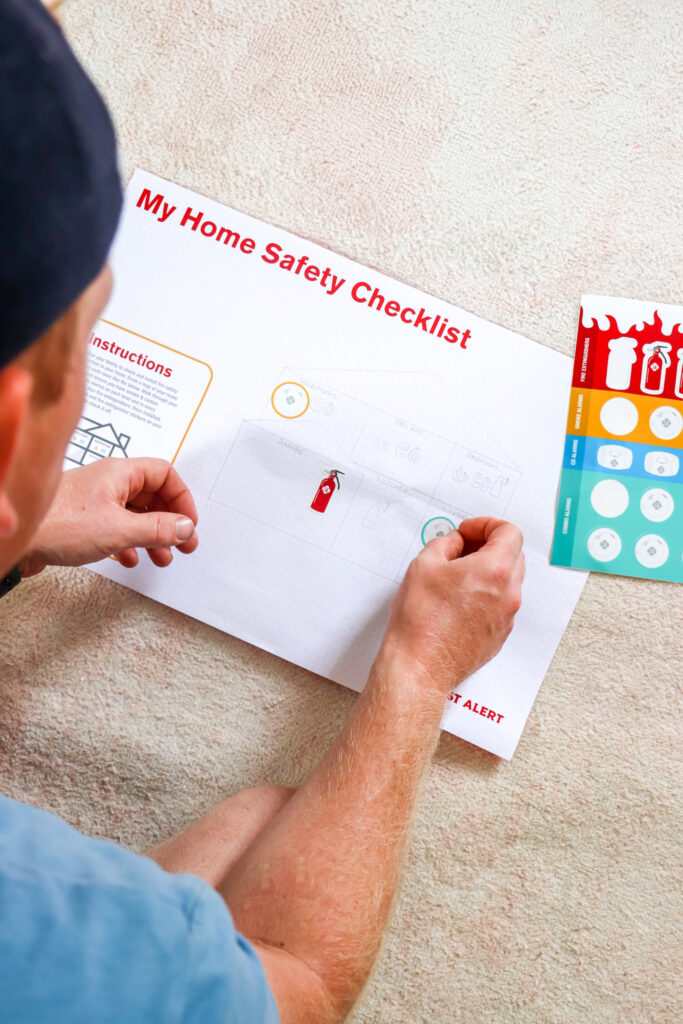
Inclement Weather Safety Plan
Do you remember when you were little and your parents would have loads of batteries, a giant flashlight, and a wireless radio to listen to the weather if the power went out? I know I am not the only one! Luckily technology has become more advanced, and we can track storms easier on our phones, but we still have to be prepared and have a plan of action.
Jared and I have already lived through two tornado warnings in a matter of weeks since Emerson was born. The first time Jared woke up in the middle of the night and heard the sirens going off which sent us into a frenzy. We weren’t expecting the weather to get that bad in the middle of the night and our baby girl was sleeping in the next room over. Luckily, we were on the same page where one of us grabbed our daughter while the other ushered the dogs downstairs into our tiny little half-bath.
From that point forward we were able to establish a plan and gather storm necessities should this happen again. The importance of having supplies in an accessible place and having a plan of action is essential when you have little time to act. Emerson is not old enough to act on her own in the event of a bad storm or tornado, so she is dependent on us to make sure things are in order. It may seem like it’s common sense but having a plan and being prepared can help communication during a frantic time and make you feel safer when taking shelter.
Supplies will differ from family to family, but here are a few of our essentials that are easy to grab and near our place of shelter include, including a flashlight with fresh batteries, a wireless phone charger, water, and a first aid kit. Bonus, our First Alert Combination Smoke & CO Alarm provides continuous protection from fire and CO, even during power outages, due to the 10-Year Sealed Battery!
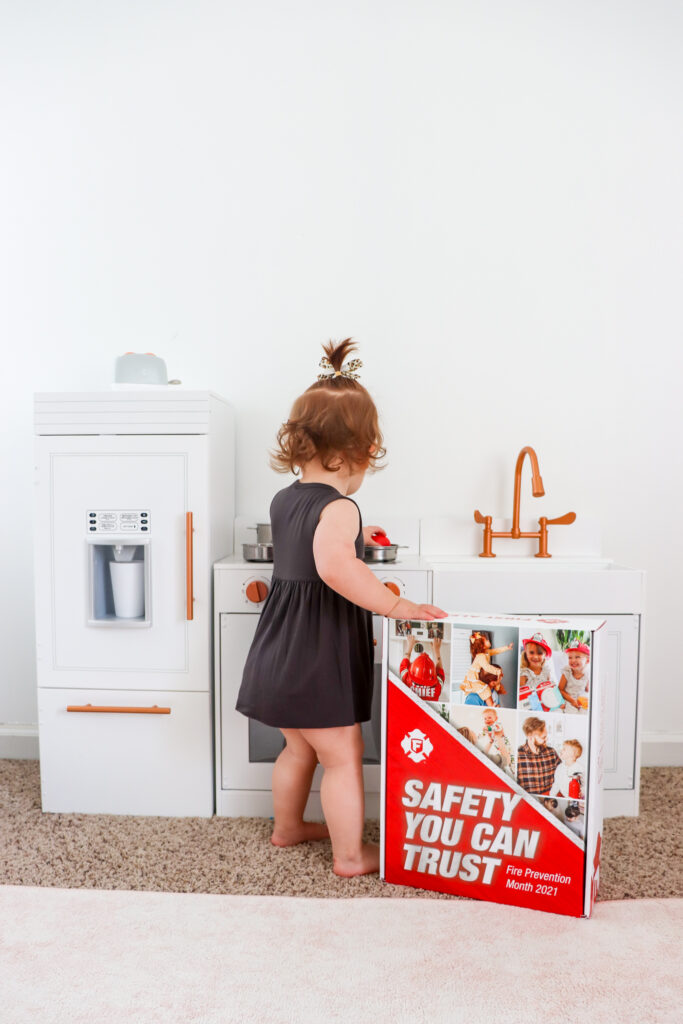
Babyproofing
Our girl is more mobile than ever and getting into so many things these days. Her curious little mind wants to climb, pull, grab, open, and everything in between. Truthfully, we are finding more and more things to babyproof throughout the house as each day passes, but we have prioritized making our home a safe environment for Emerson to grow and thrive. Below is a list of ways we have baby proofed our home:
- Secure crib, dresser, and standing shelves to the wall
- Secure baby changing pad to the surface
- Add childproof locks to drawers in reach
- Place monitor and sound machine cords out of reach
- Cover spouts and drains in bathtub
- Install toilet seat locks on toilets
- Purchase baby gates for designated areas of the home – preferably near stairs
- Place laundry pods on top shelf out of reach
- Print a list of medication dosages by age/weight, pediatrician phone number and poison control on refrigerator
- Cover stove knobs
- Insert outlet covers in all outlets
- Install draw and cabinet locks – especially in kitchen
- Make sure all sharp kitchen utensils are out of reach
- Corner covers on sharp table corners, fireplaces, shelves, etc.
Often your pediatrician will ask about efforts to babyproof your home. It can be hard to keep up with all the things you have and have not done to make your home safe. I recommend making a checklist so the next time you are at an appointment, you can show the pediatrician your list. Making a checklist is also useful for traveling with your baby and having to babyproof on the fly!
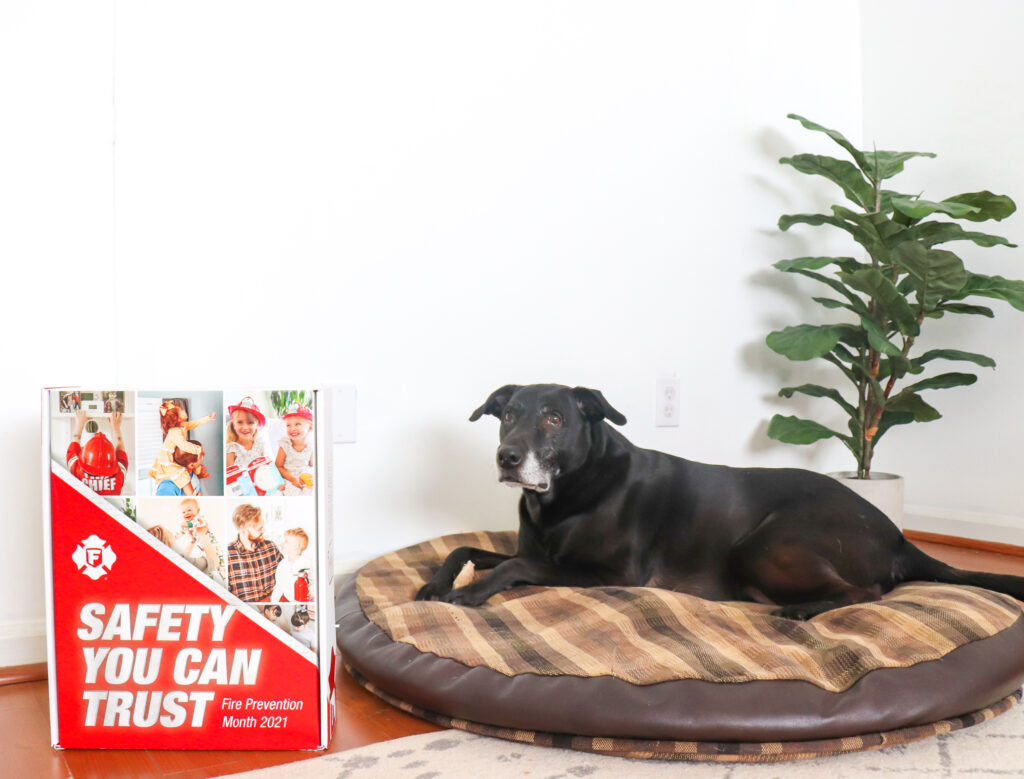
I hope you have enjoyed reading these tips. Please let this post serve as a reminder to discuss with your family what your safety plan is and to upgrade your home with the necessary equipment to help keep your family safe. Remember, First Alert has you covered!

